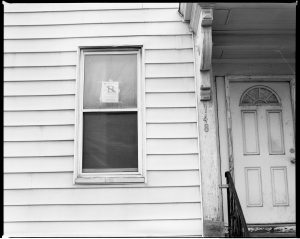Note: This article was originally published on June 22, 2021 however has been extensively re-written on May 17, 2022. As of June 25, 2024, you can now sign up to receive a guide on what to do when you get a N12.
It is quite common for tenants to be served a N12 from their landlord. A N12 is a notice given to the tenant that either the landlord or a purchaser requires the rental unit for their own personal use.
There is this belief that N12 is a sure fire way to evict a tenant. Unscrupulous landlords will issue a N12, wait for the tenant move out, and then turn around re-rent the rental unit for a much higher monthly rent. The landlord issued the N12 in bad faith and now can be held liable for a bad faith N12.
Disputing the Notice
As a tenant, you always have the right to dispute any and all notices given to you by your landlord. To dispute the notice, all you have to do is stay in the rental unit and wait for a hearing to be scheduled by the Landlord and Tenant Board. Contrary to the myth that a N12 is a slam dunk eviction, there are several defences that can be employed against a N12. At the end of the day, the burden of proof lies on your landlord that an eviction should be granted on the basis of a N12.
Help! I Received a N12!
We have put together a guide to help tenants when they have received a N12. All you need to do is provide your email. If you want to provide your name, you can. You will receive 4 emails through out a month. Each email will lay out what needs to be done for that step. You will not receive any more emails from us.
[contact-form-7 id=”08c2f6d” title=”Receive N12 (Contact 7 Form)”]
Quick Rundown of the Defences
Defences to a N12 fall into two different categories. The first category being technical. These defences rely upon what the law says when it comes to the facts. For example, your landlord has to pay you one month compensation as outlined in section 48.1 of the Residential Tenancies Act.[mfn]Residential Tenancies Act, https://www.ontario.ca/laws/statute/06r17#BK68, retrieved May 17, 2022[/mfn]
Another example of a technical defence would be that the N12 was not filed out correctly and now is defective. [mfn]Defective Notice (LTB), https://caselaw.ninja/index.php/Category:Defective_Notice_(LTB), retrieved May 17, 2022[/mfn]
The second category of defences are general defences. These defences are primarily driven not by what the law says however by the facts of the case instead. An example of a general defence would be that there is a strong suspicion that the N12 was given in bad faith.[mfn]Bad Faith – Re: N12 (LTB), https://caselaw.ninja/index.php/Bad_Faith_-_Re:_N12_(LTB), retrieved May 17, 2022[/mfn]
It can not be strongly emphasized enough, that these are just an overview of potential defences. In order for a defence to be successful, it needs evidence to support it. That evidence comes from the facts.
What To Look For
As a tenant, some of the more common issues with a N12 to keep an eye out for:
- Are the correct number of Tenants named?
- Is Landlord’s name correct?
- Correct address for the rental unit?
- Is the termination date correct?
- Is the remainder of the N12 filled out correctly?
What may look like an issue with N12, may not be an actual issue. What may not look like an issue, may be a huge issue. The best way to be sure of this, is to contact a legal professional such as Riverview Legal.
The N12 Was a Lie
As a tenant, you received a N12 and you either moved out or had the Landlord and Tenant Board order an eviction. Later you discover that the N12 was based on a lie. Your former landlord never moved in and decided to rent it out the rental unit. Should this happen, this does not prevent you as a former tenant from filing a T5 Application against your old landlord. A T5 Application is commonly known as a bad faith application. The Residential Tenancies Act clearly states that at section 57(4).[mfn]Residential Tenancies Act, https://www.ontario.ca/laws/statute/06r17#BK79, retrieved May 17, 2022[/mfn]
The potential remedies for a bad faith N12 can include:
- Pay the difference in any increased rent for one year;
- Pay up to 12 months of the old rent;
- Reasonable out-of-pocket expenses such as moving and storage;
- An abatement of rent;
- A fine to the Landlord and Tenant Board;
- General damages.
All these damages can get very expensive for your old landlord. To give a basic example of how expensive it can get for your old landlord. As a tenant you were paying $1,000 a month in rent and your new rent is $1,500 a month. Just with those two amounts, your remedy is already at $30,000. Which is $5,000 short of the total amount you can claim at the Landlord and Tenant Board. It is extremely easy to hit the monetary limit of $35,000 with a bad faith application.
June 8, 2022 – Editor’s Note – For more information on a bad faith N12, you can read the article Going After a Bad Faith N12.




